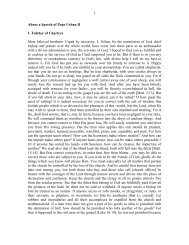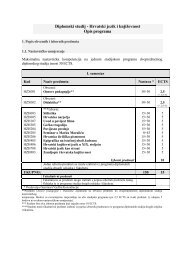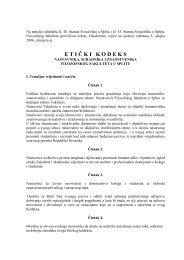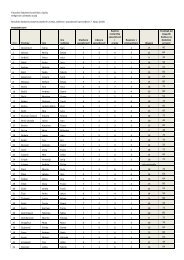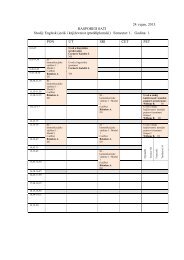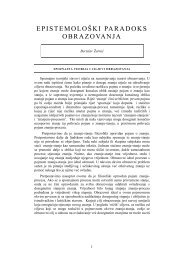Understanding Human Communication
Understanding Human Communication
Understanding Human Communication
You also want an ePaper? Increase the reach of your titles
YUMPU automatically turns print PDFs into web optimized ePapers that Google loves.
4. Power in Groups<br />
1. Think of examples from groups you have belonged<br />
to or observed in which members had<br />
and used each type of power:<br />
Legitimate<br />
Coercive<br />
Reward<br />
Expert<br />
Information<br />
Referent<br />
2. Describe the types of power you have possessed<br />
in groups. Evaluate whether your use of<br />
that power has helped or hindered the group’s<br />
effectiveness.<br />
5. Choosing the Most Effective Leadership Style<br />
Think of two effective leaders you have known.<br />
How would you describe the style of each one: autocratic,<br />
democratic, or laissez-faire? Task- or relationship-oriented?<br />
Imagine that the two leaders<br />
were transferred, so that each one was directing<br />
the other’s group.Would the same style work equally<br />
well in each situation? Why or why not?<br />
FOR FURTHER EXPLORATION<br />
Print Resources<br />
For a more detailed list of readings about group problem<br />
solving, see the CD-ROM that came with this<br />
book, and the <strong>Understanding</strong> <strong>Human</strong> <strong>Communication</strong><br />
Web site at www.oup.com/us/uhc.<br />
Adler, Ronald B., and Jeanne M. Elmhorst. Communicating<br />
at Work: Principles and Practices for Business<br />
and the Professions, 8th ed. New York: Mc-<br />
Graw-Hill, 2005.<br />
Chapter 9 offers a variety of tips on how to hold effective<br />
meetings: when to hold (and not hold) a<br />
meeting, how to prepare for an effective session,<br />
how to encourage balanced participation and keep<br />
discussion on track, and how to maintain a positive<br />
tone, even when members disagree.<br />
CHAPTER 9 SOLVING PROBLEMS IN GROUPS 321<br />
Cochran,Alice. Roberta’s Rules of Order. San Francisco:<br />
Josey-Bass, 2004.<br />
Robert’s Rules of Order has served for over 125<br />
years as a guide for using parliamentary procedure<br />
to bring order out of meetings that might otherwise<br />
be disorganized,and even chaotic.Cochran has<br />
created a less formal approach that strives for consensus<br />
instead of majority rule. For groups that find<br />
the traditional approach too confining, this book<br />
may be a useful guide.<br />
Gouran,Dennis S.“<strong>Communication</strong> Skills for Group Decision<br />
Making,”in Handbook of <strong>Communication</strong><br />
and Social Interaction Skills, J. O. Greene and G. R.<br />
Burleson, eds. Mahwah, NJ: Erlbaum, 2003.<br />
This summary by a leading scholar provides a<br />
research-based review of both task-related and relational<br />
skills that contribute to effective group problem<br />
solving.<br />
Rothwell, J. Dan. In Mixed Company: Small Group<br />
<strong>Communication</strong>, 5th ed. Belmont, CA:Wadsworth,<br />
2004.<br />
This survey of small group communication combines<br />
readability with a comprehensive look at<br />
scholarship on the subject. Rothwell pays special<br />
attention to how gender and culture affect group<br />
work and discusses the features that distinguish effective<br />
teams.<br />
Surowiecki, James. The Wisdom of Crowds. New York:<br />
Doubleday, 2004.<br />
This readable book explores a deceptively simple<br />
idea that has profound implications: groups of people<br />
make better decisions than an elite few, no matter<br />
how brilliant.



